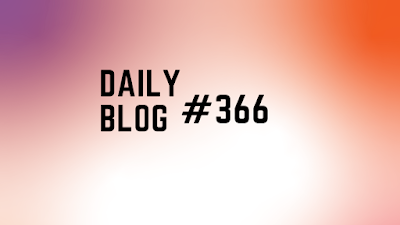Hello Reader,
As crazy as it sounds, I've missed doing daily blogs. It forced me to keep looking, reading and thinking about new things to write about and do. The forensic lunch podcast is still going strong and is not going away but that is more me leaning on others in the community to talk about what they are doing and less about forcing myself to document and share my own research.
So with that in mind, let's set our schedule for this blog.
Sunday - Sunday Funday's return, prepare yourself for more forensic fun and real prizes
Monday - Sunday Funday results
Tuesday - Daily Blog entry
Wednesday - Daily Blog entry
Thursday - Daily Blog entry
Friday - Either Forensic Lunch or a video tutorial depending on the broadcast schedule
Saturday - Saturday reading will return
This year you can expect more blogs about new artifacts, old artifacts, triforce, journal forensics, python programming for DFIR and more.
If you want to show your support for my efforts, there is an easy way to do that.
Vote for me for Digital Forensic Investigator of the Year here: https://forensic4cast.com/forensic-4cast-awards/
Otherwise, get involved! Leave comments, tell your friends about the blog/podcast, send me a tweet, drop me an email (dcowen@g-cpartners.com) it's always more fun when we all talk and work together. Windows 10 is out, OSX keeps getting updated with new features, Ubuntu is running on Windows, iOS and Android keep getting more interesting and so much more is out there to be researched!
So with it being Wednesday let's get into our first topic which leads into my next planned blog posts.
So with that in mind your homework dear reader is to read this post: https://www.hecfblog.com/2015/12/how-to-install-dfvfs-on-windows-without.html and be prepared for tomorrows first post showing how to work with this amazing collection of libraries.
As crazy as it sounds, I've missed doing daily blogs. It forced me to keep looking, reading and thinking about new things to write about and do. The forensic lunch podcast is still going strong and is not going away but that is more me leaning on others in the community to talk about what they are doing and less about forcing myself to document and share my own research.
So with that in mind, let's set our schedule for this blog.
Sunday - Sunday Funday's return, prepare yourself for more forensic fun and real prizes
Monday - Sunday Funday results
Tuesday - Daily Blog entry
Wednesday - Daily Blog entry
Thursday - Daily Blog entry
Friday - Either Forensic Lunch or a video tutorial depending on the broadcast schedule
Saturday - Saturday reading will return
This year you can expect more blogs about new artifacts, old artifacts, triforce, journal forensics, python programming for DFIR and more.
If you want to show your support for my efforts, there is an easy way to do that.
Vote for me for Digital Forensic Investigator of the Year here: https://forensic4cast.com/forensic-4cast-awards/
Otherwise, get involved! Leave comments, tell your friends about the blog/podcast, send me a tweet, drop me an email (dcowen@g-cpartners.com) it's always more fun when we all talk and work together. Windows 10 is out, OSX keeps getting updated with new features, Ubuntu is running on Windows, iOS and Android keep getting more interesting and so much more is out there to be researched!
So with it being Wednesday let's get into our first topic which leads into my next planned blog posts.
PYTSK v DFVFS
If you read the blog
last year you would have seen a series of blogs under the series title,
Automating DFIR. If you noticed, I stopped after part 13 and haven't continued
the series since. There is a reason for this and the reason is not because I
got tired of writing about it. Instead I hit the wall that required us to use
DFVFS in Triforce; Shadow Copies and E01s. Libvshadow is an amazing library but
as a standalone library it requires a raw disk image or a live disk, it does
not support other forensic image formats directly.
I looked into ways
around this by reading the Plaso code and seeing what glue they were using to
shape the object and the super classes in such a way that the libewf object
would work with libvshadow but I realized in doing so that I was just creating
more problems for myself that were already solved. DFVFS (Digital Forensics
Virtual Filesystem) was created to solve all the known issues with all the
different image formats and libraries that need to access them as framework and
wrapper that allow all of these things to work together. Now DFVFS is more than
just shadow access in E01s, it provides a wrapper around all of the forensic
image and virtual disk formats that Metz's libraries support in a way that
means you can write one piece of code to load in any disk type rather than
writing 5 functions to deal with each image format and it's care and
feeding.
I initially was worried
about using DFVFS in the blog because of the effort that it appears to take to
get it up and going. However, with 13 blog posts already out there showing how
to make pytsk work for simple solutions I think it's time to switch gears and
libraries to allow us to accomplish more interesting and complicated tasks
together with DFVFS directly.
So with that in mind your homework dear reader is to read this post: https://www.hecfblog.com/2015/12/how-to-install-dfvfs-on-windows-without.html and be prepared for tomorrows first post showing how to work with this amazing collection of libraries.
Also Read: Daily Blog #365







Post a Comment